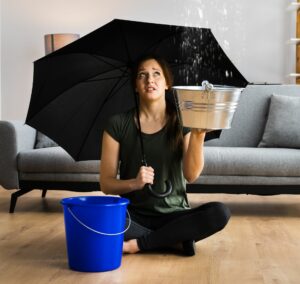Water damage can be painful to work through, whether it’s the result of a mild leak or the aftereffects of a severe storm. This damage can decrease your home’s value, destroy your property’s structural integrity, and make your environment generally unlivable. The solution is typically water damage restoration. The question is whether you should go with DIY water damage restoration or hire a professional. While DIY seems like a cost-saving option, you should think about the limits of DIY water damage restoration.
The Limits Of DIY Water Damage Restoration
The limits of DIY water restoration should always be considered when getting rid of the damage. Here are a few notable limits of DIY water damage restoration:
1. Lack of Specialized Tools
Certain kinds of water damage restoration need specific equipment and tools to address them. Attempting to replicate those tools through DIY means can be risky because they may not work as they should or potentially exacerbate the damage. Some of these pieces of equipment include mold removal foggers, pumps, air removers, moisture sensors, and many more. These tools are advanced and can cover more ground than paper towels and hairdryers.
2. Knowing How To Proceed
Another limit of DIY water damage restoration is whether or not you can evaluate the severity of the damage and how to address it. You might be dealing with water damage that isn’t too severe but find yourself overtreating it, or you could undertreat severe damage. A professional will be able to accurately assess the damage and perform the correct process for the water damage restoration.

3. Potential Sickness
Attempting DIY water damage restoration can pose a health risk. If mold is present, you might be exposing yourself to all kinds of bacteria that could make you sick. Unless you have the necessary protective gear, you should let a professional with access to said gear handle water damage that consists of mold growth. The last thing you want to deal with is medical bills in addition to repair services.
4. Risk of Injury
Severe water damage might already be destroying the structural integrity of your property. Attempting to restore water-damaged parts of your property yourself could put you at risk of injury. You might be restoring a water-damaged ceiling when it suddenly collapses. This is just one example of how you might accidentally hurt yourself when attempting DIY water damage restoration.
5. Time-Consuming
Finally, the main drawback of taking a DIY approach to restoring water damage is that it can become time-consuming. While DIY projects can be enriching, they might become a slog if you are dealing with severe water damage in your home. If you also have other obligations during the day, you might really start to grow impatient with the process. Instead, save time and money by hiring a professional from the start.
Get The Best Professional Water Damage Restoration Services From ASAP Restoration!
While DIY water damage restoration sounds enticing, it actually brings a lot of drawbacks for DIY-ers, from equipment access to various health risks. Instead, you are better off saving time and money by hiring a professional to restore your water-damaged property as soon as possible. If you live in Houston, you understand that water damage is a possible issue you might encounter. However, it’s important to know which restoration service you can trust to provide the best water damage restoration services.
Luckily, you only need to give our team at ASAP Restoration a call. We will send someone to assess the state of the water damage and determine the best course of action for treating and restoring that part of your property. Contact us today, and we will offer a free estimate.

